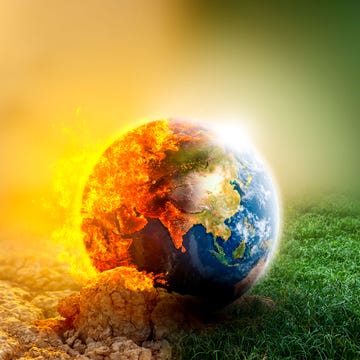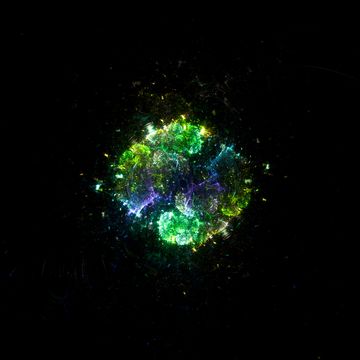- Scientists have found a path to reduce hydrogen energy costs.
- Hydrogen technology is ready to move forward, but is held back by high cost and scarcity.
- The new research involves dropping a large number of ingredients into one big computational bucket.
Scientists from Trinity College Dublin have teamed up to begin solving one of the big problems facing clean energy hydrogen production. They've been studying ways to better catalyze splitting water into energy-ready hydrogen.
“A major roadblock in realizing large-scale production of hydrogen via electrochemical water splitting is the cost and inefficiency of current catalysts for the oxygen evolution reaction (OER),” the researchers write in a new paper in Nature Communications.
Water is the most abundant compound in the universe, partly because it’s made of two of the most abundant elements, and partly because it’s an extremely stable compound. Earth is uniquely suited for stable liquid water, with a combination of temperature and atmospheric pressure that’s just right. Scientists are puzzled by the idea of water on Mars, partly because it’s hard to imagine how life-supporting liquid water could even exist there, and the Red Planet is, in some ways, a fast-forwarded version of Earth.
But that stability means trying to split water into its component parts is really difficult. Think about how easy it is to accidentally dye a load of whites by dropping in one red sock, and how impossible it is to take the pink color back out of those clothes.
The catalysts that have worked best to split water are expensive and limited, but the scientists realized there might be an entire area of unrealized potential: “[H]omogeneous catalysts are essentially infinitely tunable owing to the vastness of chemical space,” they write. “[H]ighlighting the fruitful regions within this space is a most demanding and exciting challenge which we can begin to address with these design principles.”
For those “design principles,” the scientists chose qualities that a hypothetical catalyst ingredient should have. They focused on just homogeneous catalysts, meaning substances that are also liquids if the goal is to split liquid water, but choose to bring in qualities of good heterogeneous catalysts as well.
The science is complicated, but the bottom line is that the team listed all the possible ingredients and used powerful computers to smash countless combinations together. By considering a wider range of values for each component and testing formulas that include all those different values, the researchers found wildly promising candidate formulas that could reduce the previous obstacles to almost zero.
Computer simulations can speed up both test cases in simulations and the calculation of what those test cases should be to begin with. Using powerful computational models also gives scientists a fresh perspective of sorts, because their personal impressions of what works or doesn’t work are kept separate from the actual testing. A computer can’t bring so-called “conventional wisdom” to the table at all unless we program it to.
Why is a plentiful hydrogen source so important? Hydrogen is a viable alternative energy source that can generate electric power for cars and other applications, and it has advantages over or complementary qualities to other renewable fuels. Top Gear’s James May tested a hydrogen-powered Honda on the show over 10 years ago, and the only byproduct these cars produce is a trickle of water.
Battery electric cars and hybrid cars are a step in the right direction to reduce fossil-fuel dependence, but having more forms of electric power generation with less waste materials like spent batteries just gives green businesses more options as they design consumer products.

Caroline Delbert is a writer, avid reader, and contributing editor at Pop Mech. She's also an enthusiast of just about everything. Her favorite topics include nuclear energy, cosmology, math of everyday things, and the philosophy of it all.












